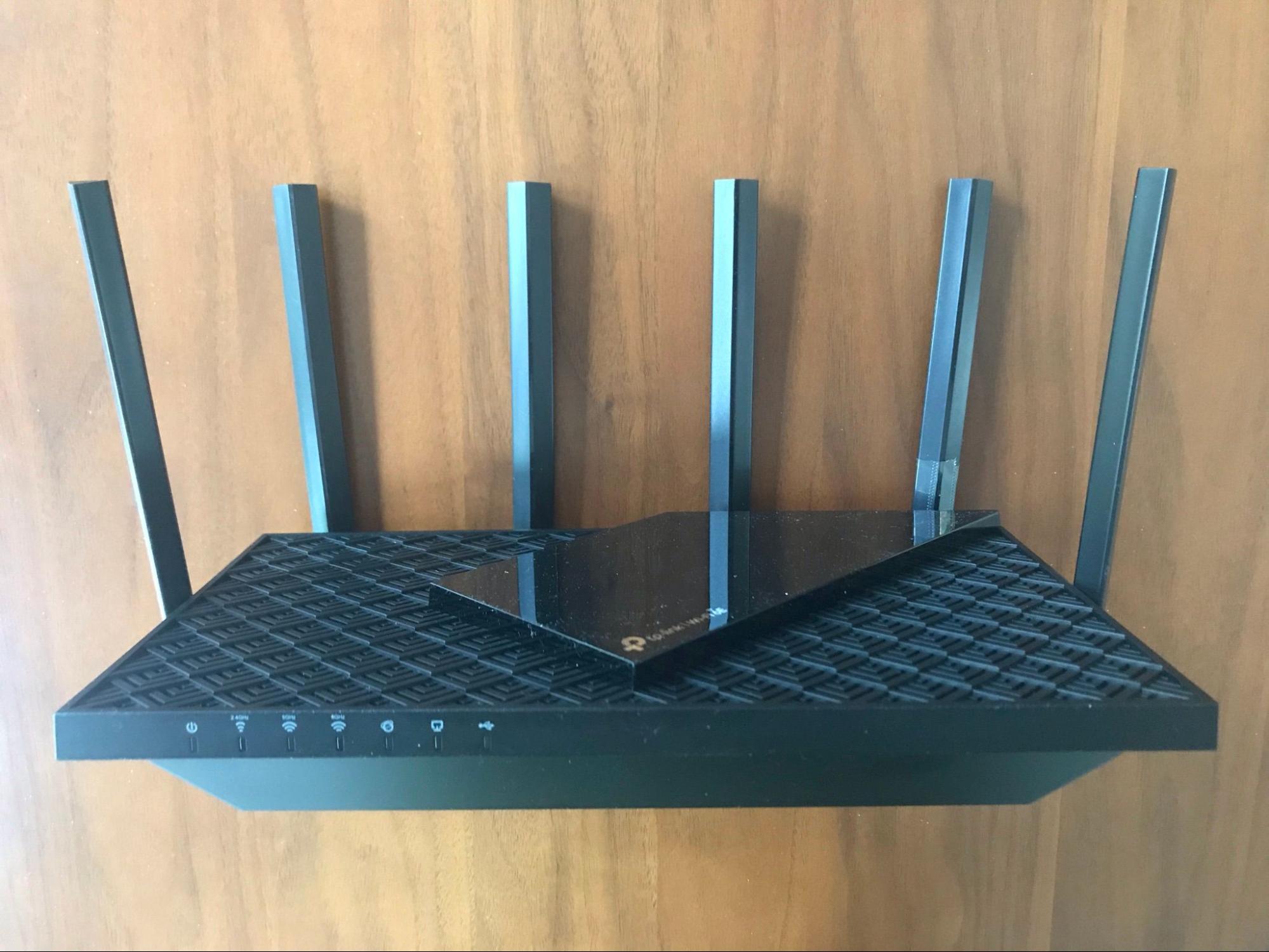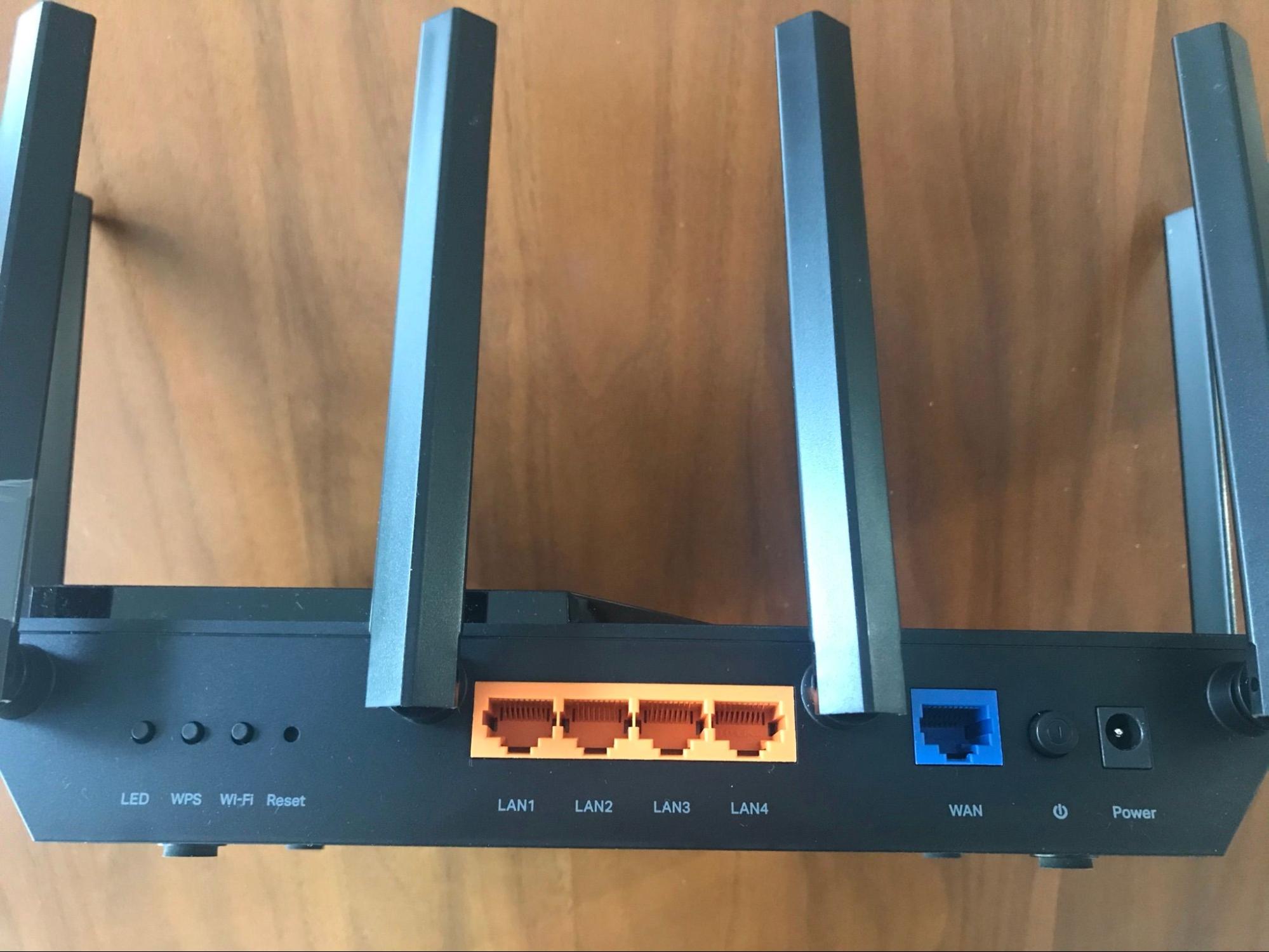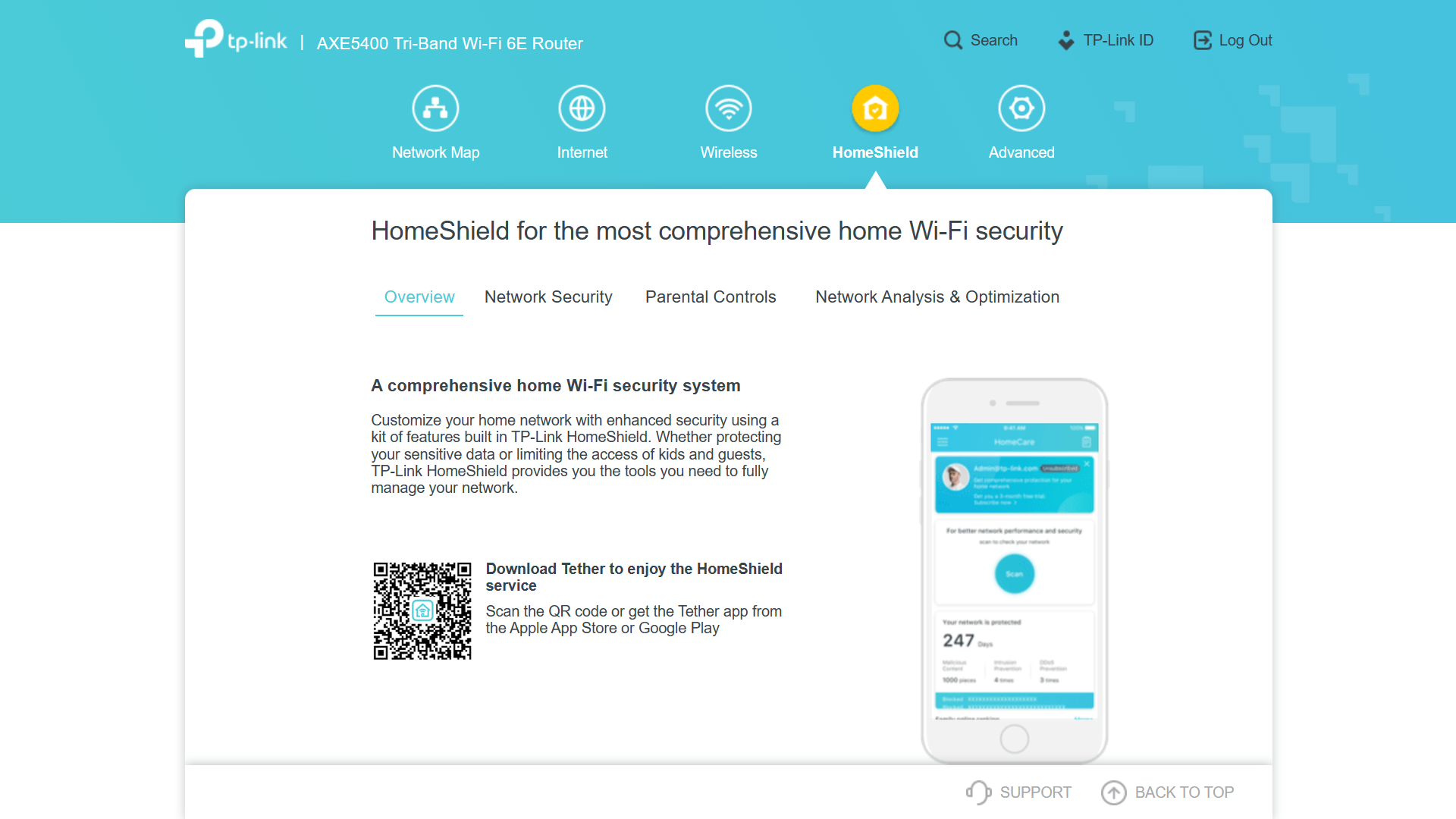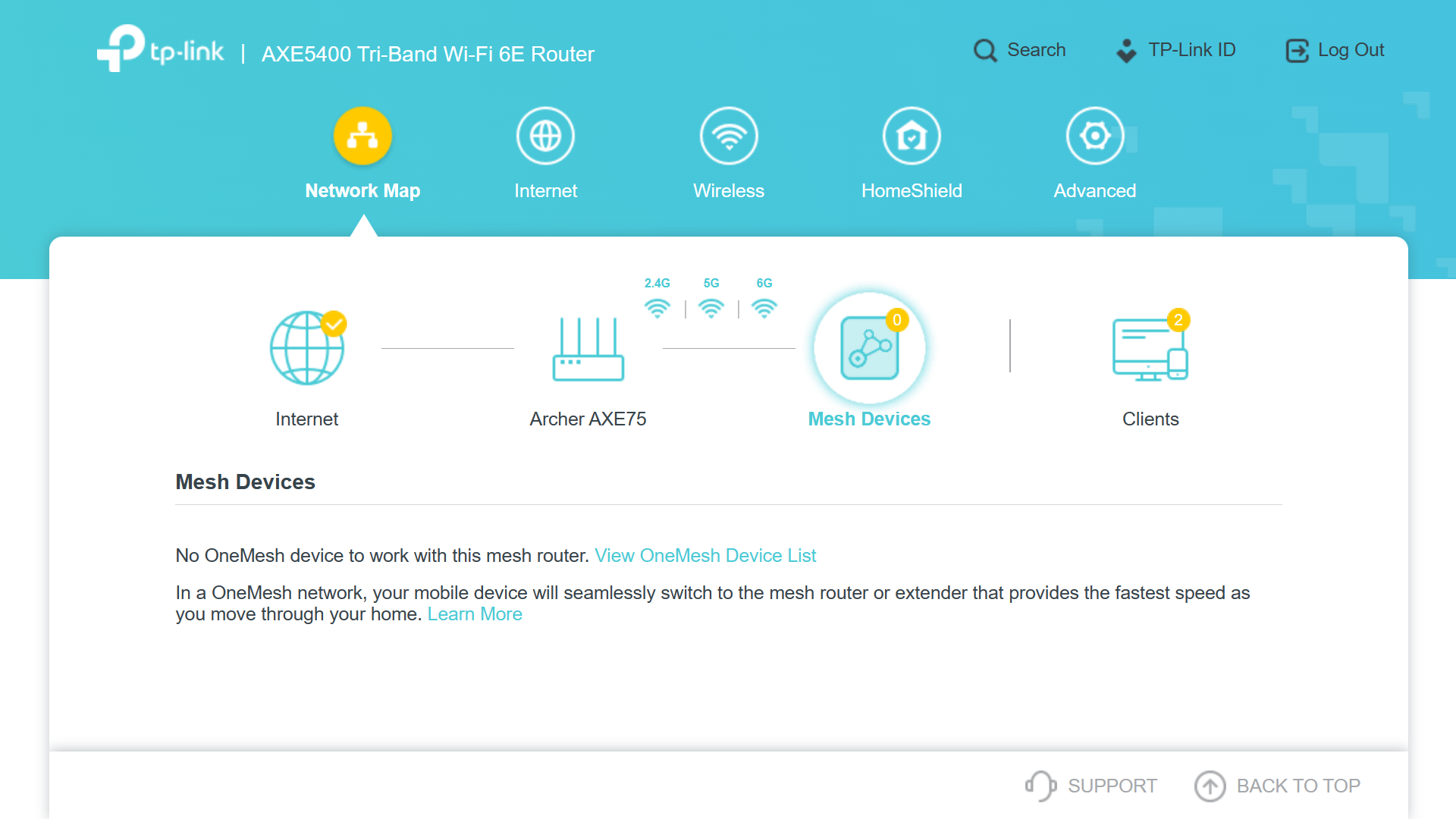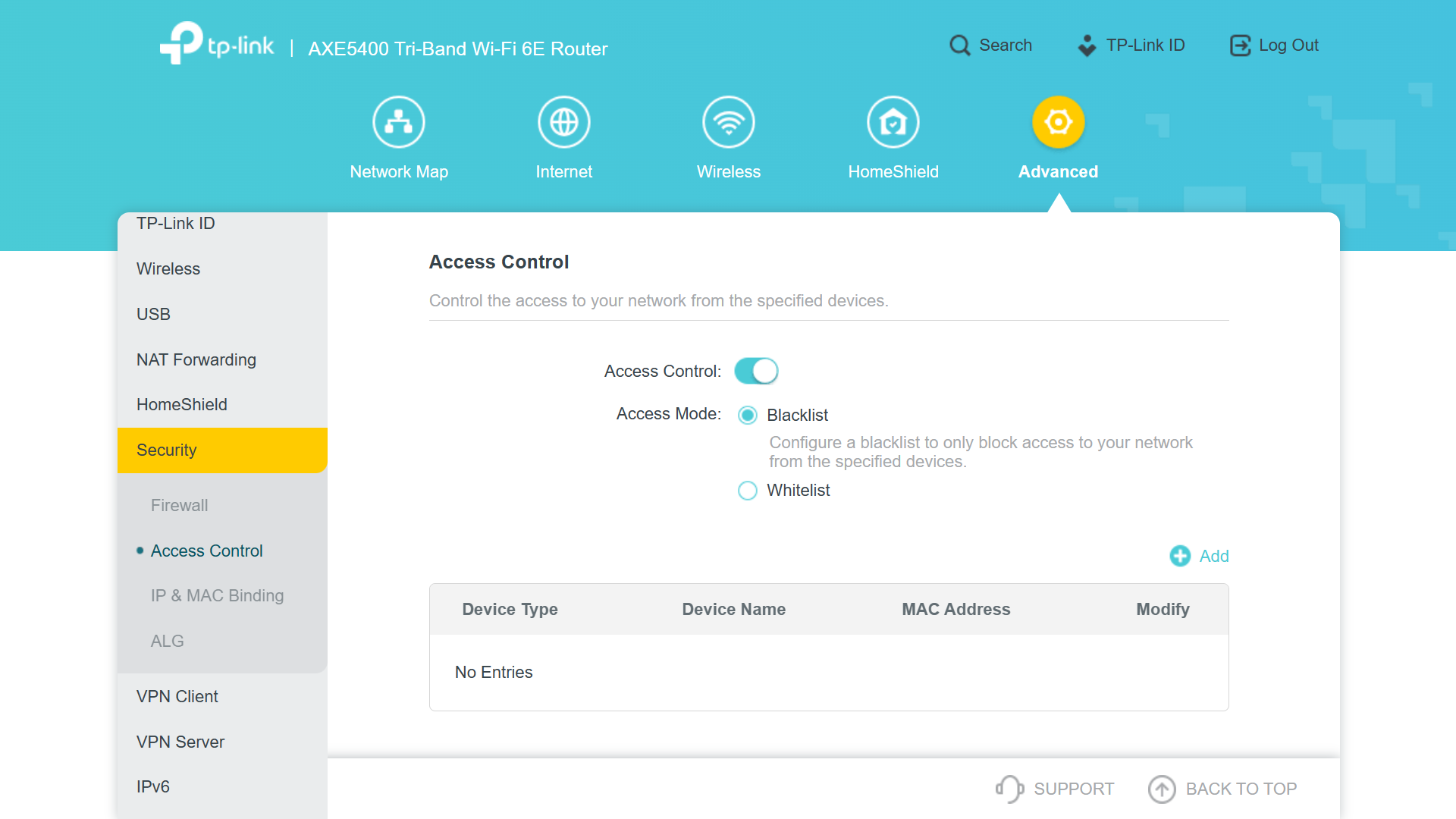Tom's Hardware Verdict
In a vacuum, the TP-Link Archer AXE75 offers decent performance and features at a value price for entry into WiFi 6E—but when compared to less-expensive routers both with WiFi 6E and 6, it’s hard to see the advantage.
Pros
- +
USB 3.0 port with file/media sharing
- +
Decent 2.4-GHz performance
- +
Overall low mean-average latency
- +
Auto-update scheduling
Cons
- -
Many important features are smartphone-app only
- -
Some features are subscription-only
- -
Large swings in latency, including packet loss
- -
Performance is not much better than WiFi 6 routers
Why you can trust Tom's Hardware
Downmarket WiFi 6E routers are almost always more expensive than those which only support the WiFi 6 protocol (after all, you’re getting not dual band but tri-band), but you can still find one for less than $200 which offers usable performance.
TP-Link’s Archer AXE75 fits into the budget WiFi 6E router category, costing $193 at press time. For that price, you get a mixed bag: solid 5-GHz throughput, acceptable 2.4-GHz performance and 6-GHz performance that’s no faster than the 5-GHz band. It’s a usable product, but nothing to beam home about.
Design of TP-Link Archer AXE75
The WiFi 6E routers seem to run larger. The TP-Link Archer AXE75 measures 10.7" × 5.8" × 1.9" (not counting its six foldable antennas). It’s roughly the size—and shape—of a small tray.
The top of the router almost completely consists of venting—in a pattern reminiscent of parquet. The exception is a raised glossy strip approximately three inches wide going across almost a third of the device at a diagonal. This bump doesn’t seem to serve much of any purpose—even aesthetically; it appears haphazard.
Other aspects of the physical design also appear questionable. There is a USB 3.0 port (which we are pleased by the presence of)—but instead of being on the back of the device with all the other ports and important bits, it is on the side. Indeed, it took us longer than we would like to admit to realize that there even was a USB port on the device.
Again, though, there are nice features—even beyond the USB port. The back of the device features an LED power button (a nice touch for those who tire of unnecessary bright lights on electronics), a WPS button, and a WiFi on/off button.
Beyond that, the back of the device has four Ethernet ports, a WAN port, and a power button.
Get Tom's Hardware's best news and in-depth reviews, straight to your inbox.
Specifications of TP-Link Archer AXE75
| Processor | 1.7 GHz quad-core Processor | Row 0 - Cell 2 |
| Operating Frequency | 2.4 GHz / 5 GHz / 6 GHz | Row 1 - Cell 2 |
| Data Rates | 2.4 GHz: 574 Mbps (802.11ax); 5 GHz: 2402 Mbps (802.11ax); 6 GHz: 2402 Mbps (802.11ax) | Row 2 - Cell 2 |
| Ports | (4) gigabit Ethernet ports, (1) gigabit WAN port, (1) USB 3.0 port | Row 3 - Cell 2 |
| Encryption | WPA, WPA2, WPA3, WPA/WPA2-Enterprise (802.1x) | Row 4 - Cell 2 |
| Wi-Fi Technology | Beamforming, High-Power FEM, OFDMA, Airtime Fairness, DFS | Row 5 - Cell 2 |
| Dimensions | 10.7" × 5.8" × 1.9" (not counting antennas) | Row 6 - Cell 2 |
| Price | $179.00+ | Row 7 - Cell 2 |
Setup of TP-Link Archer AXE75
As with most routers these days, the TP-Link Archer AXE75 can be set up via a downloadable smartphone app—“Tether”—or a web interface. We could only get the web interface to work over WiFi, oddly enough. Theoretically, we see no reason why an Ethernet setup should fail, but we found that we could not get our Ethernet client connected/recognized until after we had already successfully set up the router.
During the setup process, along with the standard steps of setting login information, the user is prompted to set a two-hour timespan for the router to download and install automatic updates. (We selected 3am to 5am.)
Speaking of which, we were also prompted to update the router’s firmware. During the updating and rebooting process (which lasted a bit longer than we would have thought), the screen popped up repeated "operation failed" notices—which we cannot account for. In the end, however, we were told that the firmware updated successfully.
Features of TP-Link Archer AXE75
We like options when it comes to router features. Unfortunately, the TP-Link Archer AXE75 doesn’t give a lot of choice; many of its features are only accessible via the Tether smartphone app. This includes Alexa integration, QoS, parental controls, network-protection tooling, security and performance scans, and reporting. While we are pleased that these features are offered, we are disappointed for both flexibility and data-privacy reasons that they can’t be accessed via the web.
Even when you download the app, you do not get complete feature access. The router and app only come with basic functionalities pursuant to TP-Link’s “HomeShield Basic” plan. For more features, you’ll have to subscribe to HomeShield Pro for either a monthly or annual fee; in exchange, you’ll get added features like additional parental controls (like enhanced time-limit features), security filters, and DDoS protection.
Speaking of mobile devices, like some other routers, the Archer AXE75 is compatible with TP-Link’s OneMesh suite for creating a mesh network.
Not all of the TP-Link Archer AXE75’s features are app-only, however. Many other basics remain available, like OFDMA, port forwarding, port triggering, creation of guest networks (which can be encrypted or unencrypted, as you desire), firewalls, VPN setup/management, router-settings backup and recovery, IPTV and multicast, and integration with Apple Time Machine.
There is also some access-control functionality even in the absence of the smartphone app—allowing you to block blacklisted devices or allow only whitelisted devices.
To help ensure that you can take better advantage of the 6 GHz band, you can also use the preferred scanning channel (PSC) setting to keep higher-connectivity channels reserved for 6 GHz.
Performance of TP-Link Archer AXE75
The TP-Link Archer AXE75 claims to offer maximums of 574 Mbps on the 2.4 GHz band and 2402 Mbps on each of the 5 GHz and the 6 GHz bands. The fine print on the packaging makes clear, however, that these are but theoretical maximums based on the IEEE Standard 802.11 specifications. We tested accordingly and found largely mediocre speeds.
We conducted tests repeatedly throughout the course of two weekdays in a single-family house with a 1,200-Mbps connection, using a laptop with a RealTek 8852CE network adapter as the client and another PC, attached via Ethernet, as the server to receive traffic. We used Iperf to test throughput and ping to test latency. Four sets of tests were conducted for each band.
Near uncongested: Testing laptop approximately 7 feet away from the router, no substantial traffic being carried across other devices
Far uncongested: Testing laptop approximately 25 feet away from the router, no substantial traffic being carried across other devices
Near congested: Testing laptop approximately 7 feet away from the router; videos streaming on four devices throughout the house
Far congested: Testing laptop approximately 25 feet away from the router; videos streaming on four devices throughout the house
Here are the results we recorded from our testing:
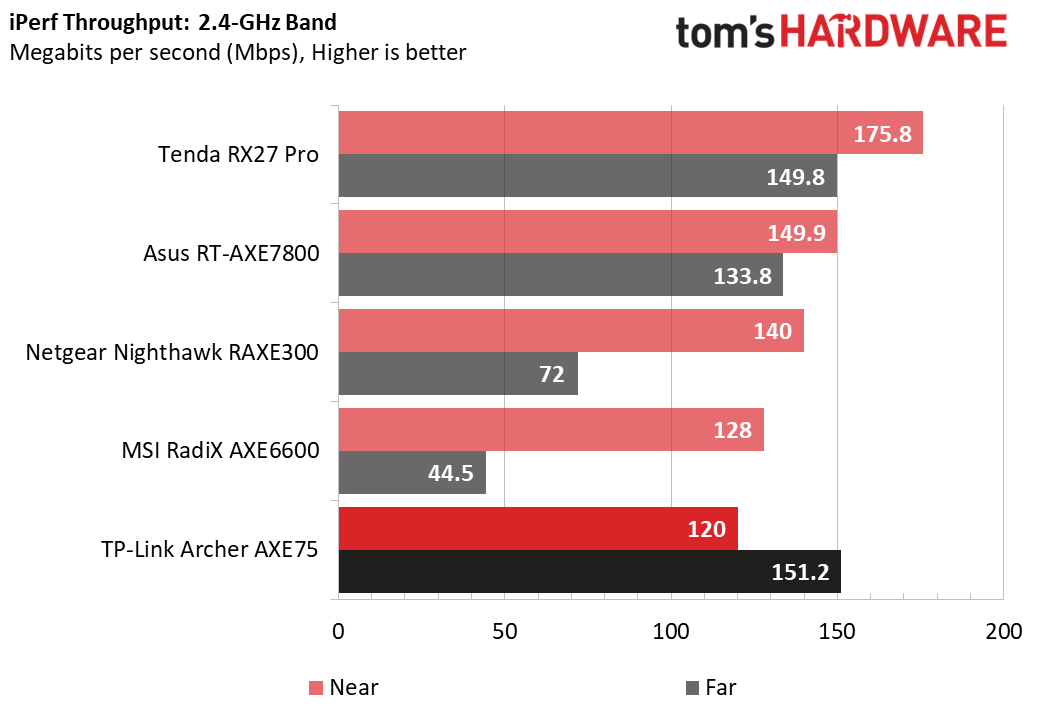
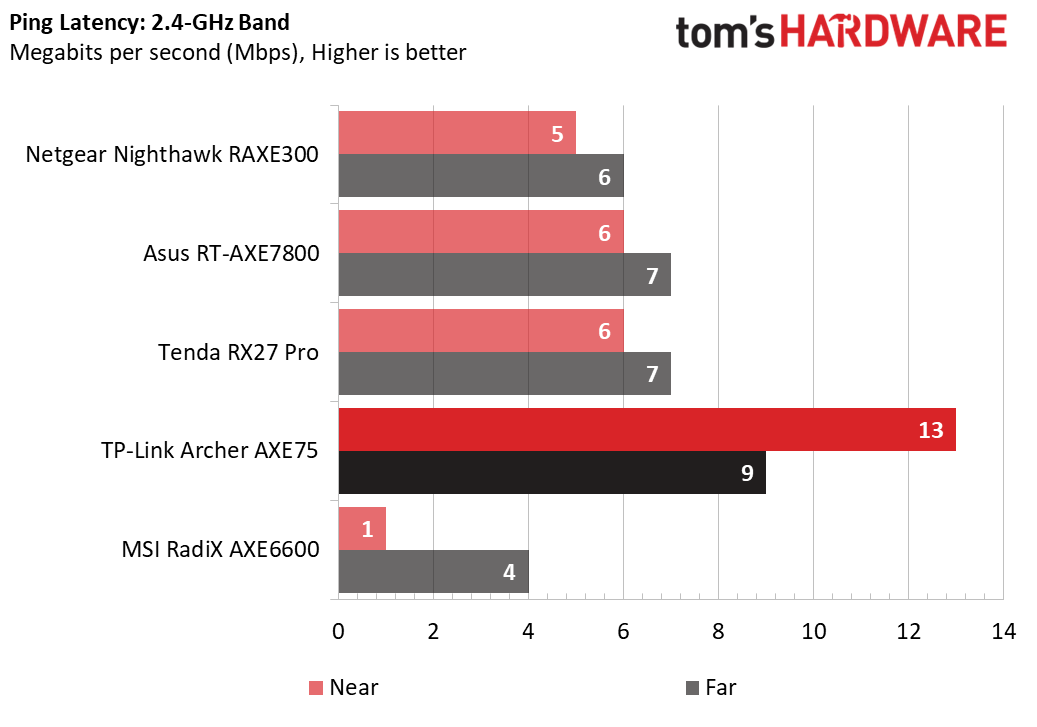
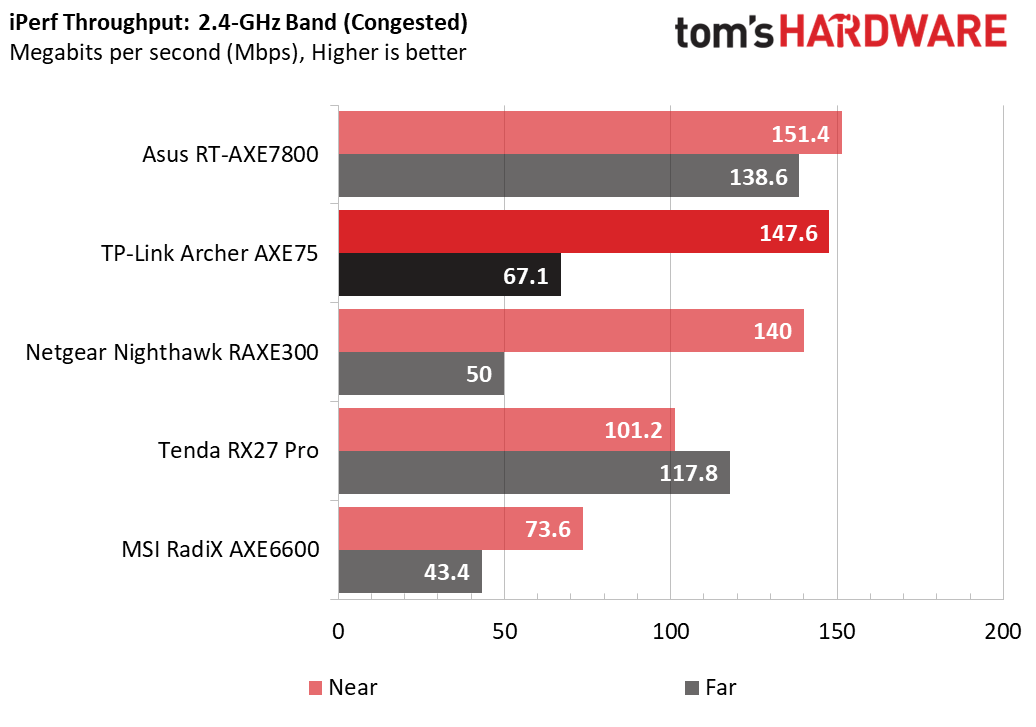
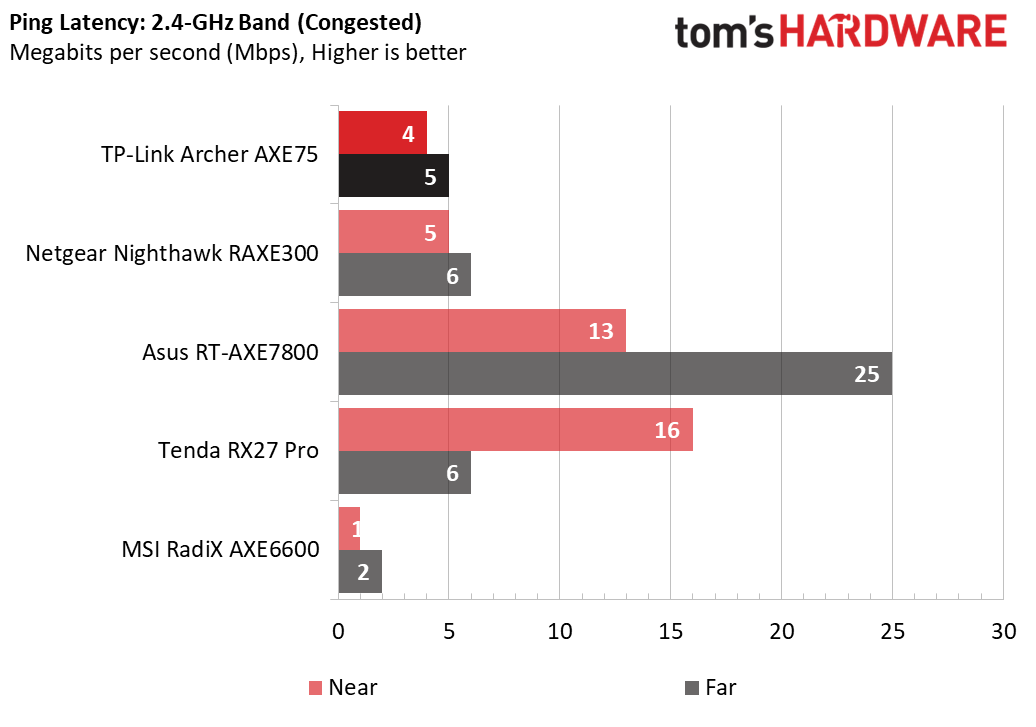
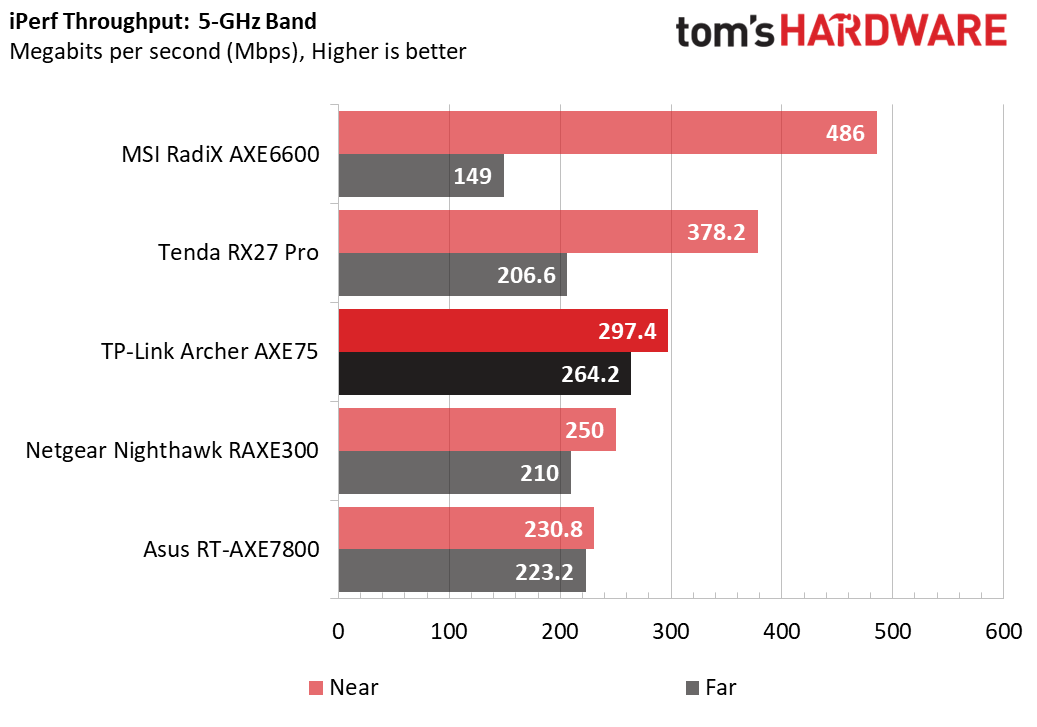
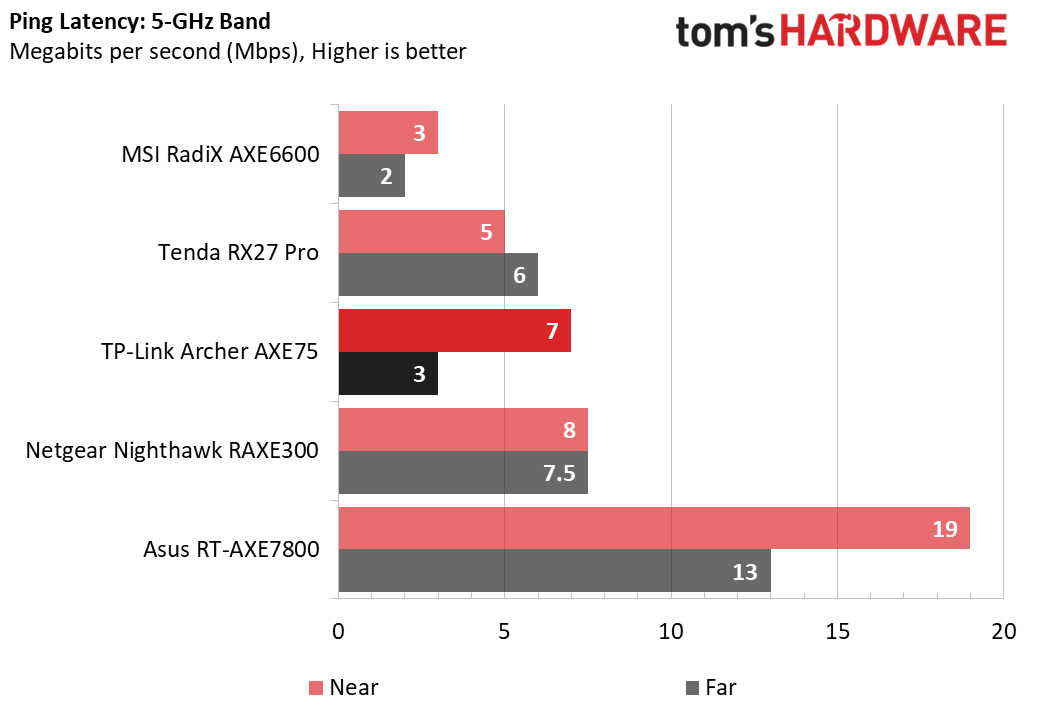
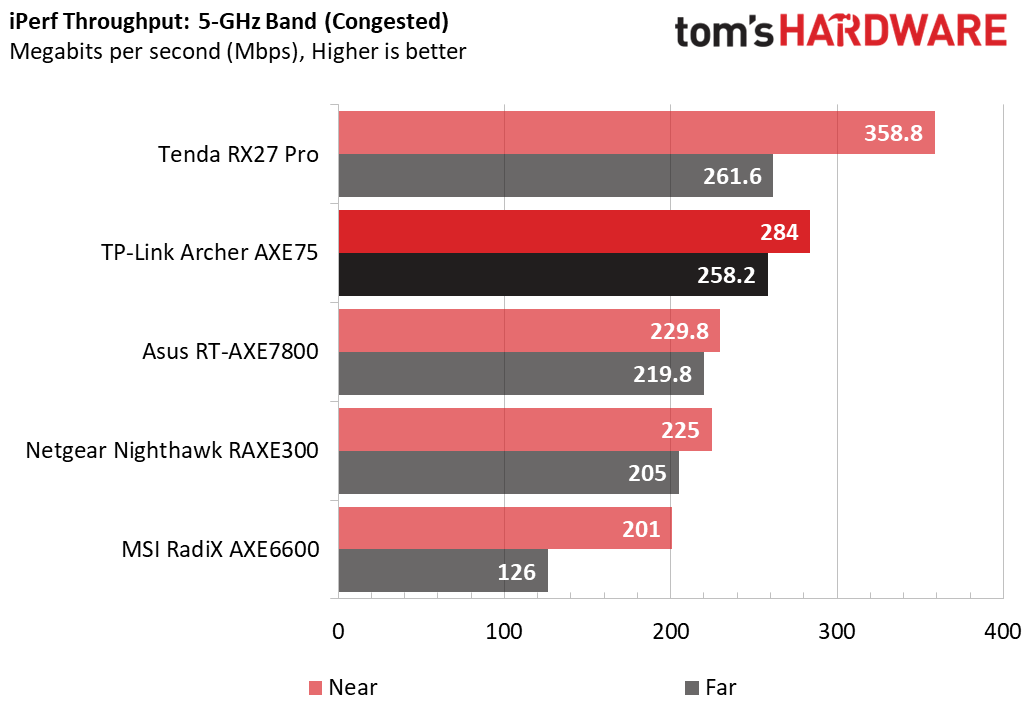
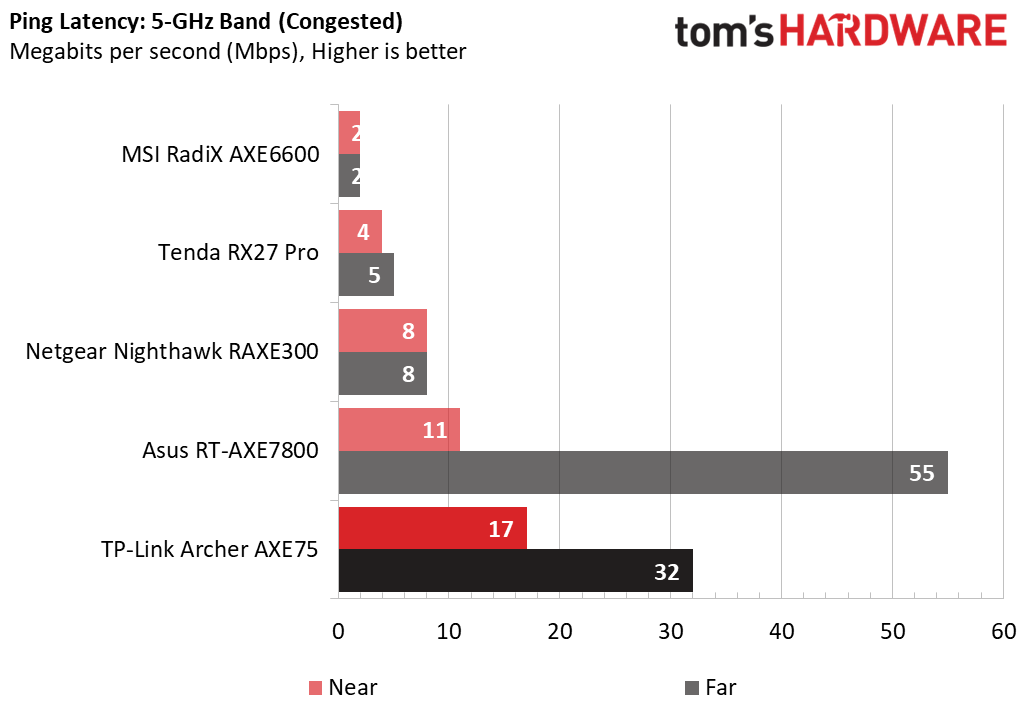
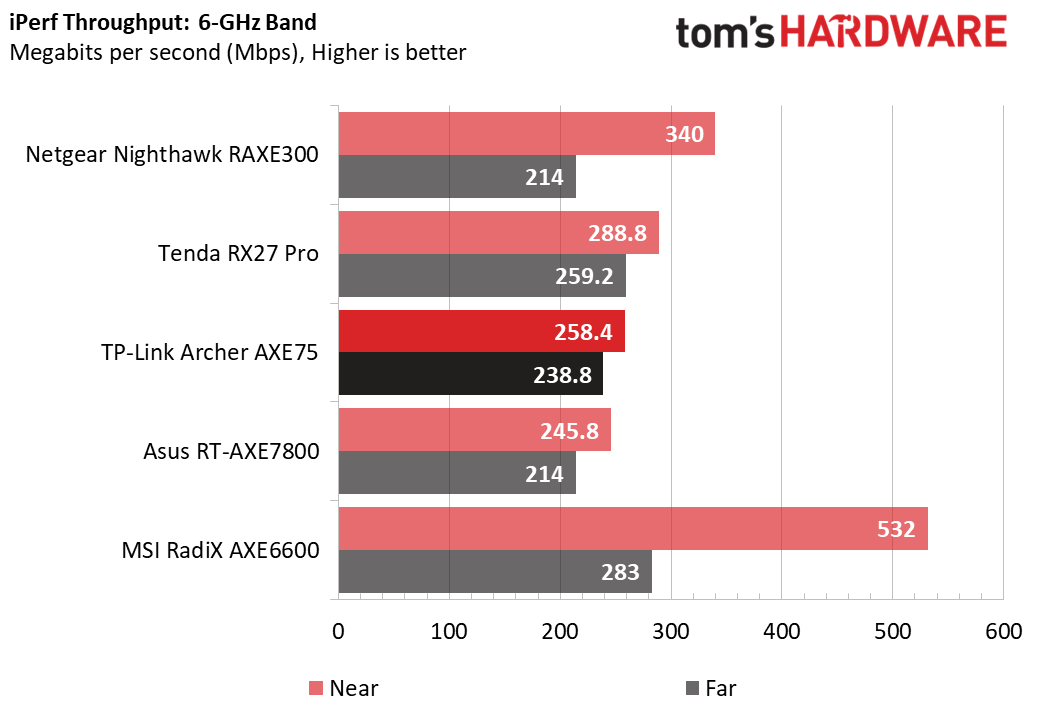
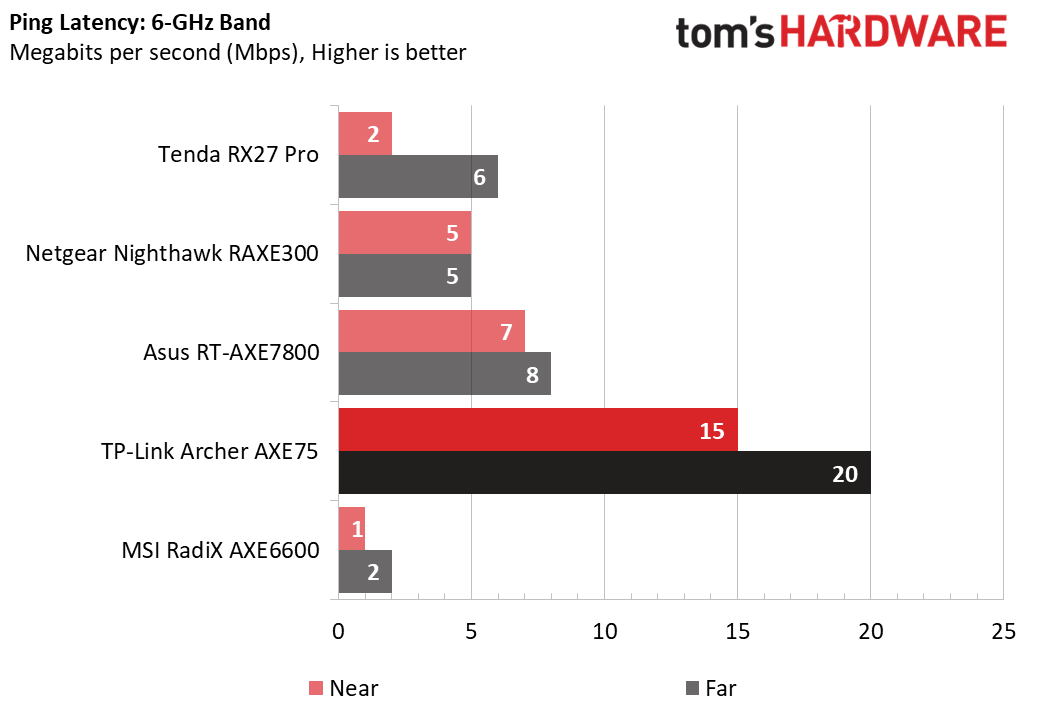
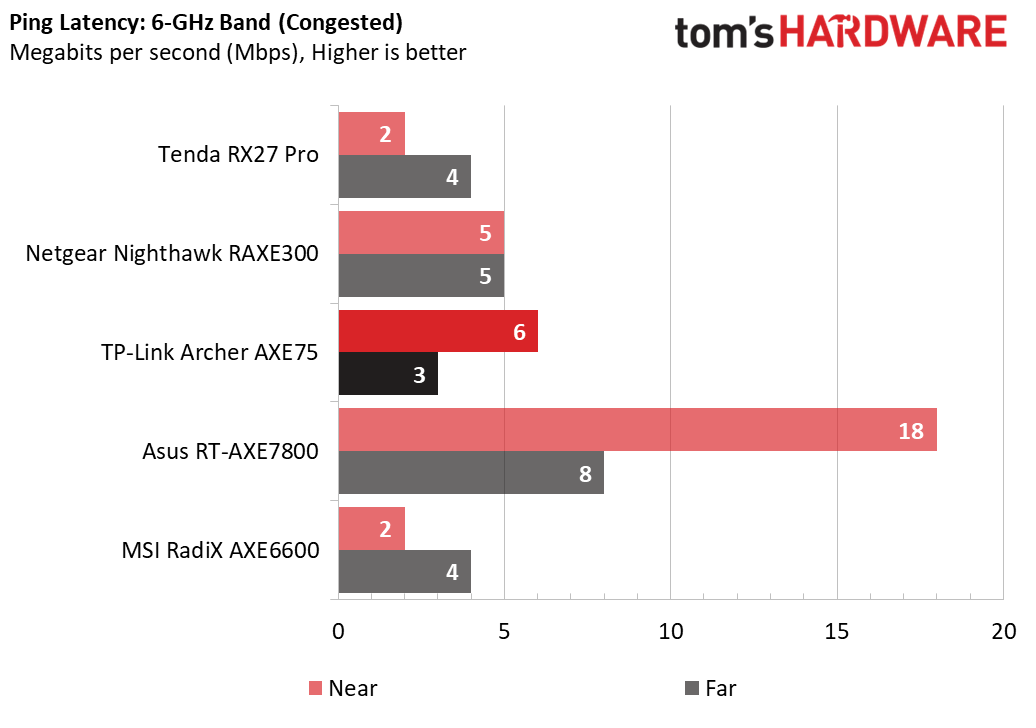

We found it extremely curious that, for the most part, traffic-congested performance was usually better than or comparable to uncongested performance under similar circumstances. In the absence of luck or some kind of odd technology that improves the more taxed it is, we suspect it’s possible that this may be a matter of unequal distribution of signal strength. (We estimate a roughly 25 to 30 degree difference in angle between our “near” testing spot and our “far” testing spot.) To this end, it is worth noting the 3% packet loss we experienced in our near-uncongested test on the 6 GHz band.
It should also be noted that mean averages in ping rate were affected, in some cases, by sudden wild swings in latency—sometimes by as much as nearly half a second. This was primarily the case, however, with our “far” tests”—both congested and uncongested.
On the 5-GHz band, which will be your main method of connecting WiFi 6 and WiFi 5 devices, the Archer’s performance was the middle of the pack, pulling in just behind the Tenda RX27 Pro in throughput on both congested and uncongested tests. Latency was solid without congestion but near the bottom of the barrel under congested conditions.
At 6-GHz, the band you can only get on WiFi 6E devices, the Archer AXE75 provided mediocre throughput and latency that was about the same as its 5-GHz speeds. So the best use of this band on this router is to reserve it for your one flagship device, perhaps your gaming PC, to make sure it has no competition for signal.
Except in the far-congested testing, performance on the 2.4 GHz band was decent. At the same time, if you’re shelling out the money for a WiFi 6E router right now, you’re probably less concerned with the 2.4 GHz band.
Bottom Line
For an entry into WiFi 6E, a roughly $200 price tag isn’t bad. But a question lingers: Why would you bother entering—at least, via this particular router?
Throughput performance on every band – 6-GHz, 5-GHz and 2.4-GHz – is solidly middle of the pack. However, latency is pretty high relative to the competition under most scenarios.
Moreover, many of the TP-Link Archer AXE75’s features are inaccessible by web interface—and, in some cases, inaccessible without a paid subscription. Many (we daresay most) of these same features are accessible both for free and via the user’s choice of web or app on competitors.
The Tenda RX27 Pro offers strong performance, unlocked features and costs about $80 less at press time, making it a far better choice overall. MSI’s RadiX has far better performance and features but costs $50 to $60 more. The Archer AXE75 might be worth considering if it was on a massive sale, but even then, there are better budget WiFi 6E routers that would still likely cost less.
Joe Stanganelli is a freelance writer for Tom's Hardware, specializing in router reviews. His expertise allows him to provide insightful and detailed assessments of the latest networking technologies and products.
-
peterf28 I have tplink archer v 2100, and it cannot achieve 1gbps speed over local Ethernet (in local lan, two PCs with SSD directly connected to the router), maximum was cca 500mbps. Try to test itReply -
The Beav This router has settings that are web only now not app only, and how is that even a downside? Lol...Reply
Anyway they just updated the firmware for Easymesh, new industry standard so it can mesh with other brands now, and can mesh the 6e band, and can even be set as a satellite finally (in case you bought 2 like me cause they are WAY cheaper than the extender they sell (found both of my axe75s for $100 US brand new)).

